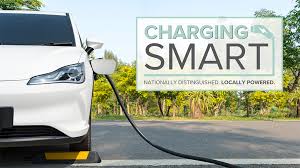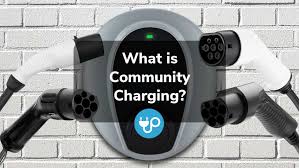Community charging initiatives are essential for enhancing the accessibility and convenience of electric vehicle (EV) ownership. These initiatives often involve partnerships between local governments, businesses, and organizations to establish charging infrastructure in key locations, such as shopping centers, public parks, and residential areas. By increasing the number of charging stations, communities can alleviate concerns about range anxiety and make it easier for residents to transition to electric vehicles. Additionally, these initiatives promote sustainability by encouraging the use of clean energy and reducing greenhouse gas emissions. Community charging programs also often include educational components, informing residents about the benefits of EVs and how to utilize the charging stations effectively. Ultimately, these initiatives foster a culture of electric mobility, making it more accessible and appealing to a broader audience.

Community charging initiatives play a crucial role in the expansion of electric vehicle (EV) infrastructure, aiming to make charging accessible and convenient for all residents. As electric vehicle adoption continues to rise, the need for a robust charging network becomes increasingly essential. Community charging initiatives address this need by collaborating with local governments, businesses, and community organizations to install charging stations in strategic locations. These locations often include shopping centers, public parks, recreational areas, and residential complexes, ensuring that charging options are available where people live, work, and play. By making charging more accessible, these initiatives help alleviate range anxiety, one of the primary concerns potential EV buyers have regarding their ability to travel without running out of battery. This increased accessibility can significantly influence consumer decisions, encouraging more individuals to consider electric vehicles as a viable alternative to traditional gasoline-powered cars.
Moreover, community charging initiatives often prioritize sustainability and environmental consciousness. Many of these programs are designed to integrate renewable energy sources, such as solar or wind power, into the charging process. This approach not only reduces the carbon footprint associated with charging electric vehicles but also promotes a broader culture of sustainability within the community. By highlighting the environmental benefits of using renewable energy, community charging initiatives help foster a sense of responsibility among residents, encouraging them to consider their own energy consumption and the impact of their transportation choices. Additionally, many initiatives aim to educate the public about the advantages of electric vehicles, providing information on cost savings, maintenance benefits, and the long-term environmental impact of transitioning to electric mobility.
Involving local businesses in community charging initiatives can also lead to economic benefits. By installing charging stations, businesses can attract more customers who own electric vehicles, creating a win-win situation for both the businesses and the community. Many charging initiatives offer incentives for local businesses to participate, such as grants or subsidies to offset installation costs. This not only helps to build the charging infrastructure but also promotes local economic growth by drawing in EV drivers who may stop for a meal or do some shopping while their vehicle charges. As a result, community charging initiatives not only enhance the convenience of electric vehicle ownership but also stimulate local economies and foster community engagement.
Technology also plays a significant role in the effectiveness of community charging initiatives. Many programs leverage smartphone apps and online platforms to provide real-time information about charging station availability, allowing users to locate nearby stations and check on their status. These technological tools enhance the user experience and ensure that residents can easily find charging options when needed. Additionally, advancements in charging technology, such as fast chargers and wireless charging solutions, are often integrated into community initiatives to improve efficiency and convenience. By embracing innovative technologies, community charging initiatives can better meet the growing demand for electric vehicle charging and enhance the overall infrastructure.
As community charging initiatives continue to evolve, they also play a vital role in shaping the broader narrative around electric vehicles. By promoting the benefits of EVs and fostering a supportive environment for their adoption, these initiatives help normalize electric mobility within communities. This cultural shift is essential for encouraging more individuals to transition away from fossil fuel-powered vehicles, contributing to a more sustainable future. Furthermore, as more communities implement charging initiatives, they serve as models for others to follow, showcasing the benefits of investing in electric vehicle infrastructure and encouraging additional local governments and organizations to take action.
In conclusion, community charging initiatives are instrumental in promoting electric vehicle adoption and creating a more sustainable transportation ecosystem. By enhancing the accessibility of charging stations, prioritizing renewable energy integration, and fostering collaboration among local stakeholders, these initiatives address the critical barriers to EV ownership. They not only make electric vehicles more convenient for residents but also contribute to local economic growth and environmental sustainability. As the demand for electric vehicles continues to grow, the importance of community charging initiatives will only increase, making them a vital component of the transition towards a cleaner, greener future. Through their efforts, communities can create a robust charging infrastructure that supports electric mobility and encourages residents to embrace sustainable transportation options.


















Kalorifer Sobası odun, kömür, pelet gibi yakıtlarla çalışan ve ısıtma işlevi gören bir soba türüdür. Kalorifer Sobası içindeki yakıtın yanmasıyla oluşan ısıyı doğrudan çevresine yayar ve aynı zamanda suyun ısınmasını sağlar.
I¦ve recently started a website, the info you offer on this website has helped me tremendously. Thanks for all of your time & work.
Đăng ký 12Bet ngay để có những trải nghiệm mượt mà như ý hơn nữa. Gamer sẽ không thất vọng khi dừng chân ở điểm hẹn này. Giao diện sắc nét với logo màu Đỏ Đen chủ đạo gây ấn tượng với bet thủ ngay từ những giây đầu. 12bet.rest
vip 79 – game bài đại thần tài tải ngay phiên bản mới nhất 2025 tại vip79.reviews. Thử cược ngay, nhận thưởng khủng, dễ chơi, trúng lớn và nhận ngay code 179k!
An interesting discussion is worth comment. I think that you should write more on this topic, it might not be a taboo subject but generally people are not enough to speak on such topics. To the next. Cheers